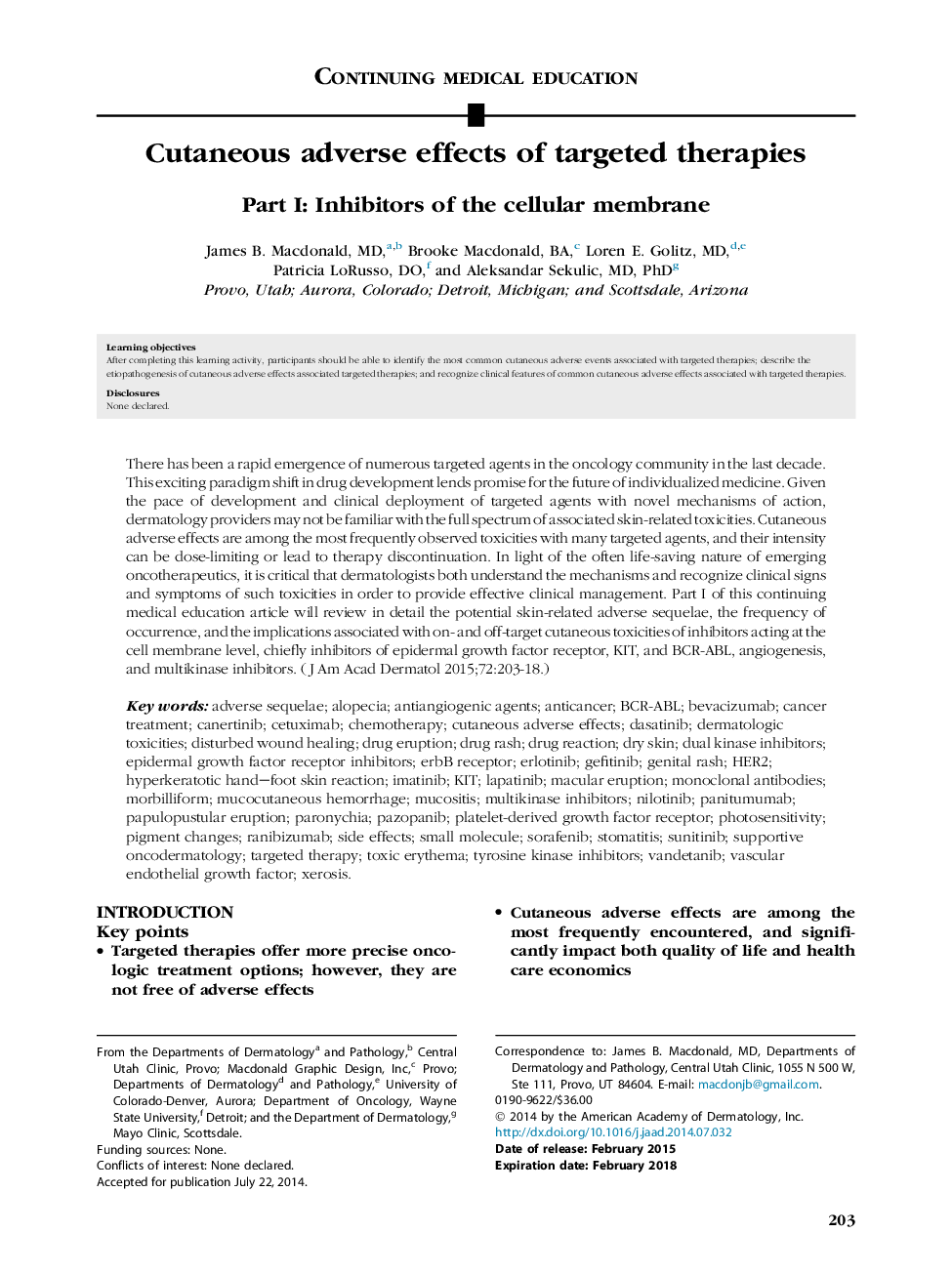| Article ID | Journal | Published Year | Pages | File Type |
|---|---|---|---|---|
| 3205004 | Journal of the American Academy of Dermatology | 2015 | 16 Pages |
There has been a rapid emergence of numerous targeted agents in the oncology community in the last decade. This exciting paradigm shift in drug development lends promise for the future of individualized medicine. Given the pace of development and clinical deployment of targeted agents with novel mechanisms of action, dermatology providers may not be familiar with the full spectrum of associated skin-related toxicities. Cutaneous adverse effects are among the most frequently observed toxicities with many targeted agents, and their intensity can be dose-limiting or lead to therapy discontinuation. In light of the often life-saving nature of emerging oncotherapeutics, it is critical that dermatologists both understand the mechanisms and recognize clinical signs and symptoms of such toxicities in order to provide effective clinical management. Part I of this continuing medical education article will review in detail the potential skin-related adverse sequelae, the frequency of occurrence, and the implications associated with on- and off-target cutaneous toxicities of inhibitors acting at the cell membrane level, chiefly inhibitors of epidermal growth factor receptor, KIT, and BCR-ABL, angiogenesis, and multikinase inhibitors.
